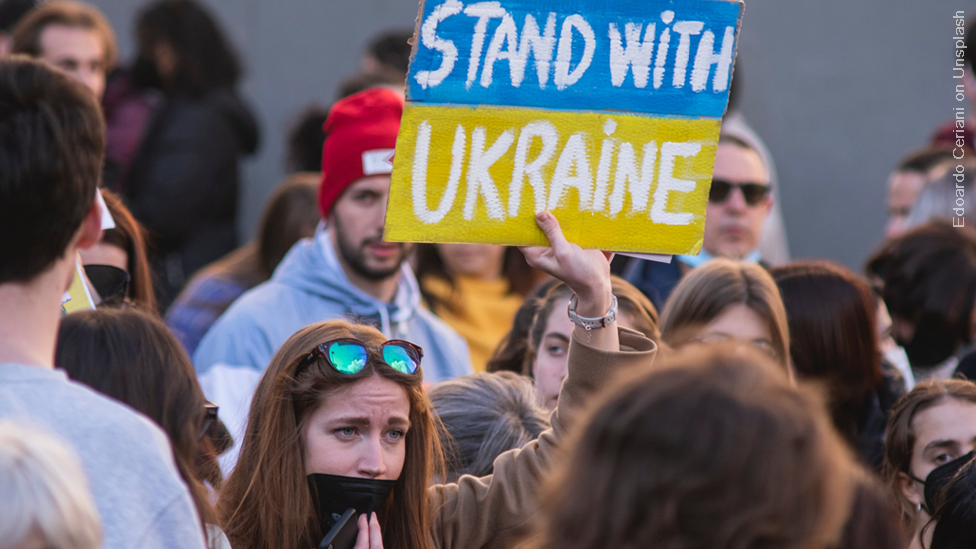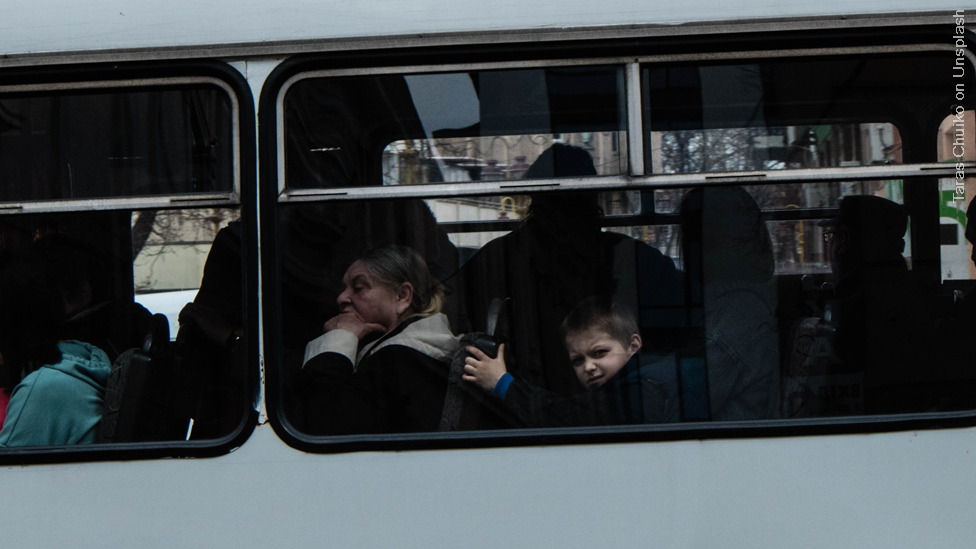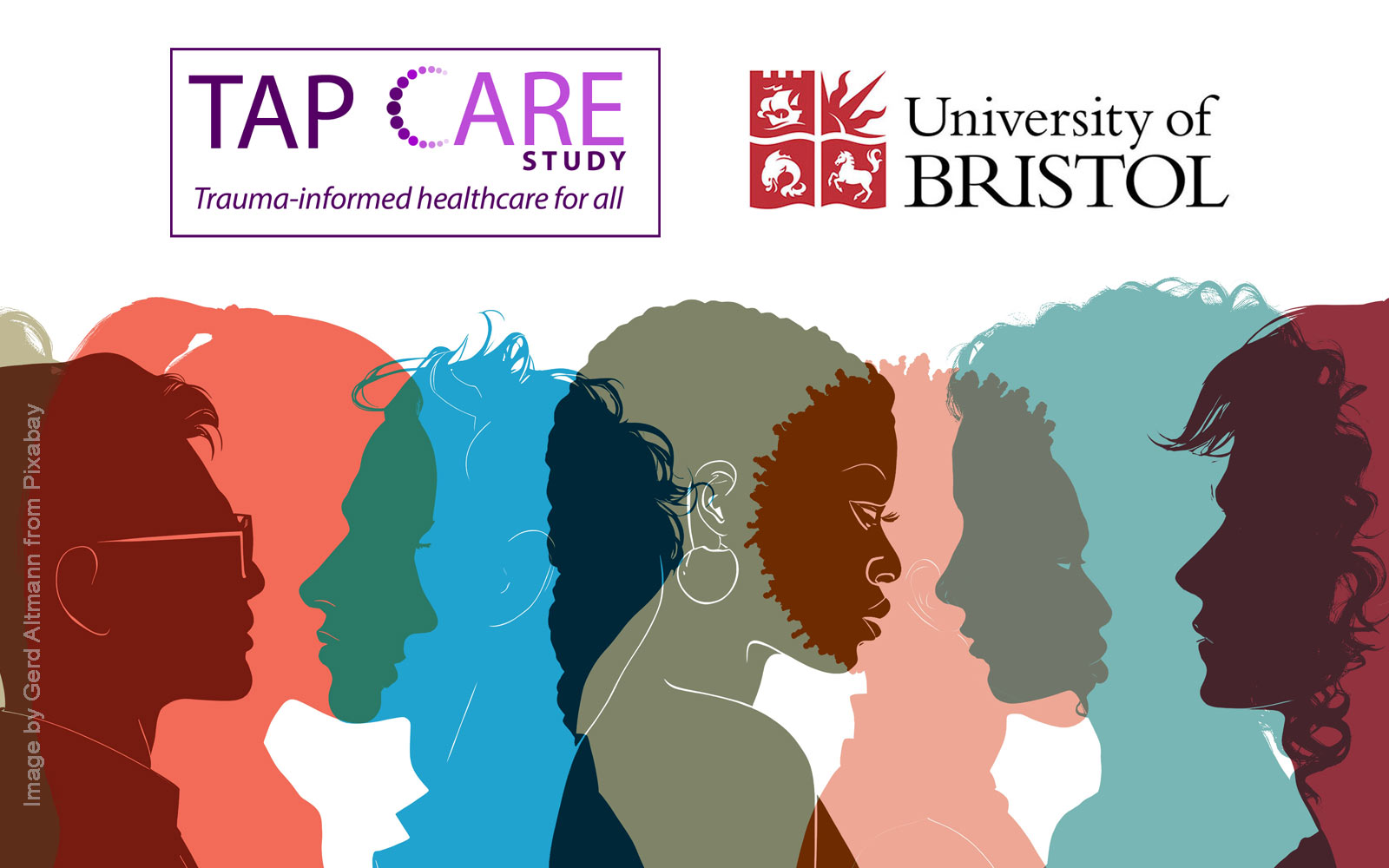Ukraine: What can we do?
Ukraine: What can we do?
As the war in Ukraine continues, we look at what we know about mental health in the country, what we should be considering when we want to help, and speak to one psychologist who believes the conflict provides an opportunity for widespread positive change.

There is an apparent paradox that has been observed in that rates of psychiatric illness seem to remain stable or even decrease during periods of active conflict. For example, during the brutal four-year Siege of Sarajevo it was suggested that over time the population adapted to constant threat and lack of basic resources to the extent that rates of psychological trauma and illness were lower than in neighbouring towns.1 A similar observation was made of Northern Ireland by Peter Curran who evoked the oft-fabled and romanticised ‘Blitz-spirt’ and the notion than enduring violent conflict can at times bring communities together in solidarity, purpose and support.2
However, war is not solely fought at a collective population level; it is highly individual and deeply personal. Disclosed mental illness may remain low, but individual psychological distress abounds. Once the weapons fall silent, rates of mental illness skyrocket.3,4 In an article in The Lancet, Charlson et al5 estimated that around one-in-five people in post-conflict settings have depression, anxiety, PTSD, bipolar disorder, or schizophrenia. The prevalence of PTSD was estimated at around 13.0% at any point in time, with around 2.0% classed as severely affected.
Our study shows that the impact of conflict on people’s mental health is higher than previous estimates suggest.
– Charlson et al
As the Russian invasion of Ukraine enters its sixth month, the embers of conflict have been smouldering in the Eastern Donbas and Crimea regions since 2014. The occupation and conflict in the East alone resulted in one of the largest movements of internally displaced people (IDPs) in the world, and it’s these populations on which the most recent published studies focus. Unsurprisingly, those internally displaced show high rates of PTSD, depression and anxiety6 and somatic distress.7 For those unable to leave, due to age or existing disability, the mental health burden is even higher.8 With many men conscripted to fighting on the frontline, the majority of IDPs and refugees are women and children. Female IDPs are at increased risk of gender-based violence, most notably perpetrated outside the home, and by armed men including those at checkpoints and IDP reception centres.9
In 2017 and before the violence spread, around two-thirds of adult IDPs who fled the conflict from within Ukraine to the cities of Kyiv and Lviv, were found to have had direct experience of conflict trauma and elevated rates of PTSD symptoms.10 In a country where approximately 77.8% self-identify as ethnically Ukrainian, and 17.3% as ethnically Russian, identity matters. The same study found non-displaced residents of the cities who identified as Ukrainian rather than Russian, also showed an increased likelihood of PTSD symptoms.
Now Kyiv – and to a lesser extent, Lviv – has come under direct attack. Infrastructure failure is becoming more widespread across parts of the country, bringing additional stress and trauma exposure. As a result of the expansion of Russian aggression and international support for Kyiv, there has arguably been a strengthening of Ukrainian ethnic identity and the widening of a shared existential threat. It remains to be seen how this shifting emphasis and the war’s eventual outcome, will interact as a either a potentially protective or additive force in the development of subsequent mental health problems, and social division in different communities both at home and abroad.11
5,988,696 individual refugees from Ukraine recorded across Europe.
– UNHCR, 19 July 2022
Many Ukrainians have fled to the comparative safety of other European countries. To date, more than 5.8 million refugees from Ukraine have been recorded across Europe, of which 1.2 million have registered for protection in neighbouring Poland, 893 thousand in Germany, and 95 thousand in the UK. The latest report from the UNHCR says that many intend to return, even whilst the conflict is still very much active, and that those journeys home have already begun.
Every facet of the Ukrainian population face the psychological consequences of war: children and young people;12 military conscripts;13 prisoners of war;14 foreign fighters returning home;15 the impact is as indiscriminate as the war itself. The immediate and future challenges can seem overwhelming.

Currently, there are a wide variety of number NGOs, charities, professional bodies and well-meaning individuals working in Ukraine, either on the ground on remotely via telemedicine and chatbots. Typically they deliver low-intensity interventions such as psychological first aid, or supportive techniques to help build understanding and develop coping strategies to normalise natural reactions to extraordinary experiences.
However, with a wide variety of groups providing aid, ensuring a coordinated and wide-ranging implementation of the IASC Guidelines on Mental Health and Psychosocial Support (MHPSS) in Emergency Settings is challenging, and questions over a paucity of systematic measures of effectiveness of MHPSS interventions persist.16
“It’s almost impossible to manage these kind of things,” says Vitalli Klymchuk, Vice-President of the National Psychology Association of Ukraine. “Now we have about twenty different telephone helplines and they are growing; every international partner that comes says they will open up this type of helpline. I’m not saying this is a bad thing, as it’s good to have a lot of options but it is a bit of a mess… and it is almost impossible to manage”.
So what can and should we do to help? Klymchuk admits it’s not an easy question to answer, although he believes the effort should begin at home. “First of all, it’s about providing support for people who are abroad. A lot of Ukrainians are hosted by UK families, so a lot of them will need basic psychological support, therapy and so on”. Mental health professionals with Ukrainian or Russian language skills are obviously in demand, but many who find themselves in the UK can speak English. After that, Klymchuk believes the effort should be on longer-term support for Ukrainian colleagues: “We have a huge amount of psychologists and professionals who are in need of education in trauma,” he says “so the second way to help is for the West to donate some teaching, some educational efforts providing capacity-building activities for Ukrainian professionals”. Crucially this should not just be short seminars or brief training but instead longer-term, in-depth knowledge and skills transfer including the provision of training in different treatments, materials and supervision. He also highlights the sharing of thematic expertise such as working with grief, or separated families, as well as best practice in working with specific populations such as older adults, or children and young people.
It is very important to seize the moment.
– Vitalii Klymchuk
The historical Soviet approach to understanding and treating mental health still casts a shadow in attitudes and practice over Ukraine. A cross-sectional study of population attitudes towards mental health in the country showed that whilst empathy for those with mental ill health was high, stigmatising attitudes also prevailed, along with a poor overall understanding of mental illness.17
Low rates of mental healthcare utilisation abound, despite higher rates of mental ill health in some groups. High costs, stigma, lack of awareness or provision of services and a belief individuals were better using their own existing medications, were all cited as potential reasons for a 74% treatment gap amongst IDPs.6 More widely, there is a skills gap in the identification, treatment and awareness of (the limited) onward referral options amongst primary care providers.
However, Klymchuk believes that the current crisis is a chance for long-lasting systemic change. “It’s very important to seize the moment, to capture this wave when people think about mental health, speak about mental health, and with leaders who raise this topic”. Despite the ongoing war, he states there are a lot of institutions and people who are available to think and work on development of their country. The influx of international funding, attention and expertise provides an enviable platform to promote a new model of delivering psychological care across Ukraine.
His vision, set out with colleagues in a recent paper,18 starts with every community in Ukraine being equipped with self-help, peer-to-peer and informal services that can react and respond to an area’s specific need. These services would feed into primary care services better equipped and knowledgeable about the treatment and management of widespread mental health conditions. From there, community-based inpatient and outpatient services and finally specialist care would become increasingly involved the more serious, complex and enduring the need becomes.
It is this emphasis on community and building the capacity of those services, that he believes is key to understanding what is appropriate for each area. The war’s impact is uneven across Ukraine’s vast mass, so the response needs to be nuanced. “Rebuilding Mariupol or Kharviv is one thing, [but] other places are dealing with IDPs so it’s important to develop the capacity of local services in the community. We can think of community services as some sort of filter: ‘it’s my community, what do they need?’”
Alongside providing psychological care to Ukrainians who have found shelter abroad, and training Ukrainian professionals, it is to this systemic change that he invites colleagues beyond Ukraine’s borders to contribute. “It’s very hard to build something by yourself,” he states but by advising, consulting and informing decision-makers, as well as sharing best practice and experience of mental health care systems, international colleagues can play a vital role.
“From this mess, it will be possible to create something workable,” he says. As the war shows no current sign of abating, the challenge for us all is to start thinking about and contribute to what might come next.
References
- Agger, I. & Mimica, J. ECHO psycho-social assistance to victims of war in Bosnia-Herzegovina and Croatia. (1996).
- Curran, P. S. Psychiatric Aspects of Terrorist Violence: Northern Ireland 1969–1987. Br. J. Psychiatry 153, 470–475 (1988).
- Bunting, B. P., Murphy, S. D., O’Neill, S. M. & Ferry, F. R. Lifetime prevalence of mental health disorders and delay in treatment following initial onset: evidence from the Northern Ireland Study of Health and Stress. Psychol. Med. 42, 1727–1739 (2012).
- Comtesse, H., Powell, S., Soldo, A., Hagl, M. & Rosner, R. Long-term psychological distress of Bosnian war survivors: an 11-year follow-up of former displaced persons, returnees, and stayers. BMC Psychiatry 19, 1 (2019).
- Charlson, F. et al. New WHO prevalence estimates of mental disorders in conflict settings: a systematic review and meta-analysis. The Lancet 394, 240–248 (2019).
- Roberts, B. et al. Mental health care utilisation among internally displaced persons in Ukraine: results from a nation-wide survey. Epidemiol. Psychiatr. Sci. 1–12 (2017) doi:10.1017/S2045796017000385.
- Cheung, A. et al. Patterns of somatic distress among internally displaced persons in Ukraine: analysis of a cross-sectional survey. Soc. Psychiatry Psychiatr. Epidemiol. 54, 1265–1274 (2019).
- Summers, A. Serious psychological distress and disability among older persons living in conflict affected areas in eastern Ukraine: a cluster-randomized cross-sectional household survey. 10 (2019).
- Capasso, A. et al. Patterns of Gender-Based Violence in Conflict-Affected Ukraine: A Descriptive Analysis of Internally Displaced and Local Women Receiving Psychosocial Services. J. Interpers. Violence 088626052110630 (2021) doi:10.1177/08862605211063009.
- Johnson, R. J., Antonaccio, O., Botchkovar, E. & Hobfoll, S. E. War trauma and PTSD in Ukraine’s civilian population: comparing urban-dwelling to internally displaced persons. Soc. Psychiatry Psychiatr. Epidemiol. (2021) doi:10.1007/s00127-021-02176-9.
- Kira, I. A., Shuwiekh, H., Rice, K., Al Ibraheem, B. & Aljakoub, J. A Threatened Identity: The Mental Health Status of Syrian Refugees in Egypt and Its Etiology. Identity 17, 176–190 (2017).
- Bürgin, D. et al. Impact of war and forced displacement on children’s mental health-multilevel, needs-oriented, and trauma-informed approaches. Eur. Child Adolesc. Psychiatry 31, 845–853 (2022).
- Bryant, R. A., Schnurr, P. P. & Pedlar, D. Addressing the mental health needs of civilian combatants in Ukraine. Lancet Psychiatry 9, 346–347 (2022).
- Liebrenz, M. et al. Mental health and welfare of prisoners of war and people living in detention in the Ukrainian conflict. Lancet Psychiatry 9, 344–345 (2022).
- Smith, A., Buadze, A., Dube, A. R., Schleifer, R. & Liebrenz, M. Volunteer Foreign Fighters in the Ukrainian Conflict and Considerations for Forensic Psychiatry: Toward an Interdisciplinary Dialogue. Front. Psychiatry 13, 914369 (2022).
- Kamali, M. et al. Delivering mental health and psychosocial support interventions to women and children in conflict settings: a systematic review. BMJ Glob. Health 5, e002014 (2020).
- Quirke, E., Klymchuk, V., Suvalo, O., Bakolis, I. & Thornicroft, G. Mental health stigma in Ukraine: cross-sectional survey. Glob. Ment. Health 8, e11 (2021).
- Quirke, E., Klymchuk, V., Gusak, N., Gorbunova, V. & Sukhovii, O. Applying the national mental health policy in conflict-affected regions: towards better social inclusion (Ukrainian case). Ment. Health Soc. Incl. 26, 242–256 (2022).
For more links to resources, information and how to make donations, click here.



